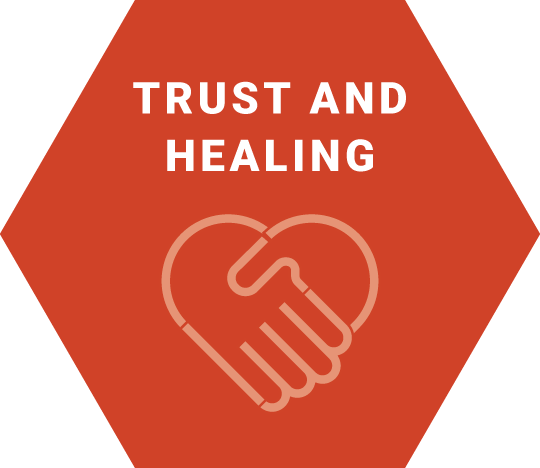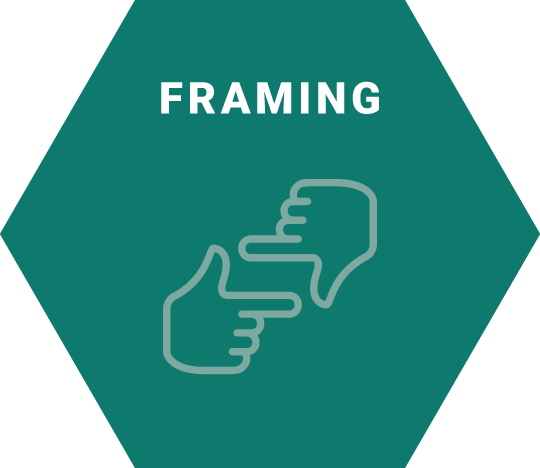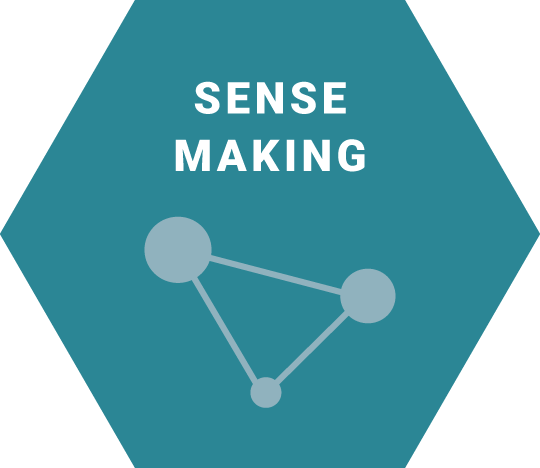| Module | Methods | Who | Where | When |
|---|---|---|---|---|
|
|
Deep Listening |
CPS students, parents, CBOs (Community Based Organizations)/advocates, FACE (Family Community Engagement in Education) managers, teachers, principals, administrators. | At schools, trusted community locations or virtually. | Week 1 Two hour workshop. |
|
|
Five Whys |
CPS students, parents, CBOs /advocates, FACE managers, teachers, principals, administrators. | At schools, trusted community locations or virtually. | |
|
|
Group Listening Conversations |
CPS students, parents, CBOs/advocates, FACE managers, teachers, principals, administrators. | At schools, trusted community locations or virtually. | Weeks 3-4 Two conversations of 60 minutes each. |
|
|
Empathy Maps |
CPS students, parents, CBOs/advocates FACE managers, teachers, principals, administrators. | At schools, trusted community locations or virtually. | Week 5 One hour workshop. |
The objective of this plan is to develop the skills to actively listen, challenge the assumptions about why barriers to change may exist in certain stakeholder groups and practice empathy in understanding the positions others may have.
|
Who:
|
Where:At schools, trusted community-based organization locations or virtually |
When:Week: 1 |
Supplies Needed:
|
To develop the skills to actively listen across stakeholder groups including a combination of CPS students, parents, community-based organizations, advocates, FACE managers, teachers, principals, or administrators and work together to reframe the problem related to barriers to change.
Trust and Healing / Deep Listening
Practice deep listening exercises in one-to-one pairs with different stakeholders in order to practice active listening and processing. If in person you will need comfortable chairs and, if virtual, cameras should be enabled.
- Find a partner.
- Take turns speaking about any topic you would like for one minute each.
- While your partner is talking, remain silent, maintain eye contact and focus on what the other is saying.
- Reflect on the experience and record your reflections in the ‘deep listening worksheet.
- Debrief as a group. Discuss surprises, challenges or realizations.
- Repeat this exercise multiple times over a period of time for practice.
LEARN MORE ABOUT DEEP LISTENING
Framing / Five Whys
Conduct a Five Whys exercise to question assumptions about why barriers to change may exist for these groups.
- Use the Five Whys worksheet to conduct this exercise.
- Write your initial frame based on a previous collective mindmap, research, or personal experience.
- Come up with at least two explanations that answer the question, “Why is this happening?”
- For each of the problem frames identified in the previous step, dig deeper and provide two more explanations for the occurrence of these problems.
- Review the frames you have identified and prioritize the one you would like to focus on.
- There is no wrong frame. Pick the one that best supports the team’s objectives. This could be based on impact, empowerment, resources, or context.
|
Who:
|
Where:At schools, trusted community locations or virtually |
When:Weeks: 3-4 |
Supplies Needed:
|
Listening / Group Listening Conversations
Conduct or attend two 60-minute group listening conversations with parents, students, administrators, FACE managers or community stakeholders to further explore the problem frame and identify why barriers to change may exist within these stakeholder groups.
- Align as a team on the topic and scope of your session.
- Identify who needs to attend your session.
- Obtain any necessary permissions for attendance, recording video or photographs.
- Prepare the room and materials for the session.
- Prepare your agenda and identify a clear goal for artifacts and outputs that you want to capture during the session.
- Determine roles for your team members, and align on expectations for documentation.
- Conduct the activity.
- Give participants a starting point for the discussion by sharing a story, or providing a template with an example.
- Ask participants to capture their beliefs through notes, drawings and other means.
- Listen more than you talk.
- Ask clarifying questions whenever possible to avoid making assumptions about what people mean.
- At the end of the session provide information of next steps and follow-up opportunities.
- After your session, conduct a debrief to review key insights, discuss what went well and what could be done differently, and coordinate who will manage any session artifacts.
|
Who:
|
Where:At schools, trusted community locations or virtually |
When:Week: 5 |
Supplies Needed:
|
Sense Making / Empathy Maps
Using the data captured during the Group Listening Conversations, conduct an Empathy Maps exercise with parents, teachers, students, FACE Managers or community members in order to empathetically understand positions different from your own, especially as it relates to barriers to change.
- Choose a person you interacted with who represents a common experience, common issue, or a radically different perspective.
- Describe this stakeholder.
- Describe what they need, in their own words when possible.
- Capture the challenges around that need.
- Identify what is supporting them in getting what they need.
- Describe their expectations of CPS and the city in relation to getting what they need. Explore how those expectations make them feel and behave
- Choose a compelling quote from your notes that encapsulates their hardships or needs.
- Repeat this exercise with at least 2 different stakeholders to represent the varied experiences and perspectives of those you have spoken to.



